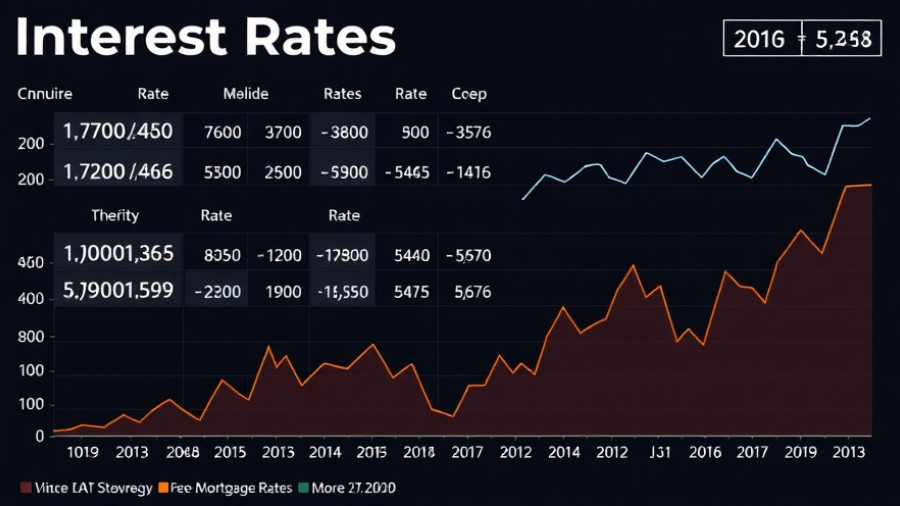
Current Mortgage Market Overview
As financial markets continue to adapt to shifting economic conditions, the average top-tier 30-year fixed mortgage rate has stabilized at 6.23% as of October 17, 2025, just above the three-year low. Typically, weaker bond markets would lead to higher mortgage rates, but the subtle fluctuations in the bond market indicate a unique scenario. In this case, lenders seemed to maintain their rates despite minor market losses, likely due to prior gains that had yet to be fully factored into lending rates.
The Role of Economic Indicators
Current mortgage rates are inextricably linked to various economic indicators, including Treasury yields and employment data. The 10-year Treasury yield has seen minor fluctuations around the 4.018% mark, which correlates with the fixed mortgage rates offered to consumers. However, uncertainties around the labor market and ongoing economic challenges, including the federal government shutdown, are hampering buyers’ confidence. A recent report indicated a substantial decrease in buying power driven by an imbalance between income growth and the rising costs of homes, which remains a significant concern for potential homebuyers.
Implications for Homebuyers and Refinancers
For homebuyers, the current environment presents both challenges and opportunities. The combination of lower mortgage rates—with the Freddie Mac survey highlighting a drop from last week’s 6.3% to this week’s 6.27%—and a slight uptick in housing inventory creates a more favorable market for negotiations. Experts believe that the uptick in refinancing activity is fueled by these lower rates, thus contributing positively to overall market dynamics.
Future Trends in Mortgage Rates
Looking ahead, experts anticipate gradual fluctuations in mortgage rates throughout the remainder of 2025. For instance, varying predictions from organizations like Fannie Mae and the Mortgage Bankers Association suggest a steady decline, albeit over a slow trajectory, with an outlook for mortgage rates dipping slightly lower as we move into 2026. This trend should be taken into consideration by buyers and borrowers looking for the best timing to secure financing.
Buyer Sentiment and Economic Stability
Despite the favorable rates, economic sentiment remains cautious, influenced largely by uncertainties in the job market and rising living costs. The ongoing government action, or lack thereof, although ostensibly a distant matter, profoundly influences buyer sentiment. Markets with a substantial representation of federal employees or contractors are feeling the pinch, which could lead to a slower recovery in housing transactions in those areas.
Actionable Insights for Buyers
For potential homebuyers or those considering refinancing, the landscape remains intricate. Market conditions suggest it is essential to monitor mortgage rates closely while considering personal financial goals. In uncertain economic times, various strategies can help homeowners make informed decisions. It would benefit buyers to remain adaptable by being prepared to act when favorable rates present themselves, ensuring timely and advantageous responses to market changes.
Conclusion: Navigating the Mortgage Maze
The current mortgage market has stabilized at just above three-year lows, presenting both hurdles and opportunities for those looking to buy or refinance. While lower rates encourage activity, external economic factors necessitate a vigilant approach for all involved in the housing industry. As the market evolves, stakeholders must remain informed and agile, adapting to changing dynamics to achieve financial success.
 Add Row
Add Row  Add
Add 




Write A Comment